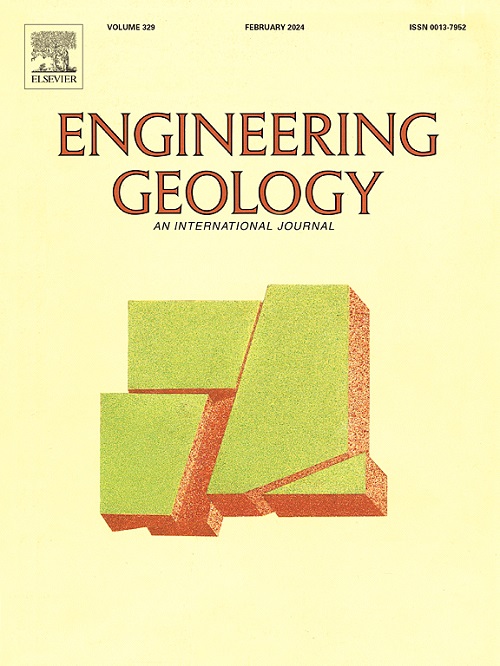Characterization of directionality influence on non-Darcian flow in single rock fractures
IF 6.9
1区 工程技术
Q1 ENGINEERING, GEOLOGICAL
引用次数: 0
Abstract
Significant differences in non-Darcian flow between different directions (i.e., forward and reverse flow directions) exist in rock fractures, and understanding of these differences holds crucial implications for evaluating and characterizing flow within fractured rocks. This study proposes a directional aperture parameter to quantitatively characterize the differences in flow between different directions. Firstly, a directional aperture parameter capable of quantitatively distinguishing geometric information of fractures in different directions is proposed. Then, 900 sets of linear and nonlinear flow numerical experiments based on 90 rough fractures are conducted. The results reveal that the differences between forward and reverse flow are shown in the nonlinear flow regime, with equal viscous permeability but significant differences in inertial permeability between the two flow directions. The main reason for the differences lies in the variations of aperture along the two flow directions. A dual-parameter model characterizing the inertial permeability is established by using the directional aperture parameter based on the numerical experimental data from the 90 rough fractures. The critical condition where the significant differences between the forward and reverse flow starting to appear are identified. The quantitative characterization of differences in three-dimensional rough fractures between different directional flows is discussed. The findings from this study could be helpful in advancing our understanding of fluid flow behaviors in natural rock fractures.
求助全文
约1分钟内获得全文
求助全文
来源期刊

Engineering Geology
地学-地球科学综合
CiteScore
13.70
自引率
12.20%
发文量
327
审稿时长
5.6 months
期刊介绍:
Engineering Geology, an international interdisciplinary journal, serves as a bridge between earth sciences and engineering, focusing on geological and geotechnical engineering. It welcomes studies with relevance to engineering, environmental concerns, and safety, catering to engineering geologists with backgrounds in geology or civil/mining engineering. Topics include applied geomorphology, structural geology, geophysics, geochemistry, environmental geology, hydrogeology, land use planning, natural hazards, remote sensing, soil and rock mechanics, and applied geotechnical engineering. The journal provides a platform for research at the intersection of geology and engineering disciplines.
 求助内容:
求助内容: 应助结果提醒方式:
应助结果提醒方式:


